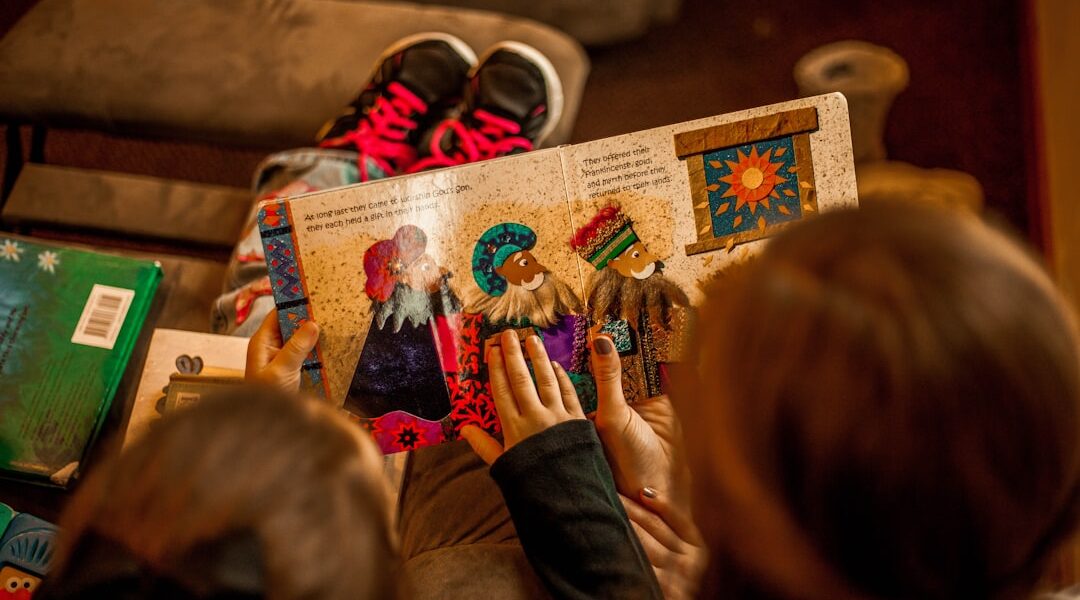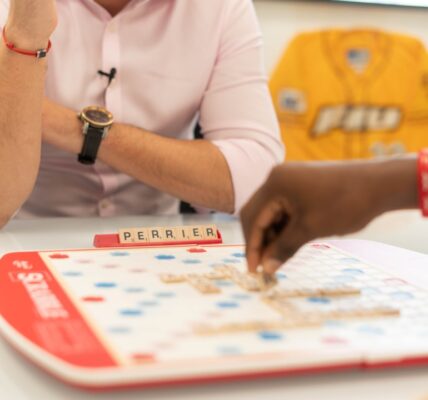Positive discipline is a parenting approach that emphasizes teaching children appropriate behavior through positive reinforcement and clear boundaries. This method is founded on the principle that children learn most effectively in an environment where they feel secure, loved, and respected. Instead of relying on punishment or harsh discipline, positive discipline encourages parents to use empathy, understanding, and effective communication to guide their children’s behavior.
The ultimate goal is to help children develop self-discipline, problem-solving abilities, and a sense of responsibility for their actions. The philosophy behind positive discipline is that children are inherently good and capable of learning from their mistakes. It stresses the importance of building strong, trusting relationships between parents and children, as well as creating a supportive and nurturing environment for growth and development.
By understanding and applying the principles of positive discipline, parents can effectively guide their children’s behavior in a manner that promotes self-esteem, resilience, and emotional well-being. Positive discipline also involves establishing clear expectations and consequences for behavior while allowing children to participate in the decision-making process. This approach encourages parents to listen to their children’s perspectives and involve them in problem-solving, rather than imposing rules and punishments without explanation.
By comprehending and implementing the underlying principles of positive discipline, parents can foster a more harmonious and respectful relationship with their children, based on mutual understanding and cooperation.
Key Takeaways
- Positive discipline focuses on teaching children appropriate behavior rather than punishing them for misbehavior.
- Techniques for positive discipline include setting clear expectations, using logical consequences, and offering choices.
- Building a stronger connection with your child involves spending quality time together, actively listening to them, and showing empathy.
- Creating a positive and supportive environment includes providing a safe and nurturing home, setting a good example, and offering encouragement and praise.
- Encouraging open communication and mutual respect involves being open and honest with your child, respecting their feelings and opinions, and resolving conflicts peacefully.
- Nurturing emotional intelligence and empathy includes helping children identify and manage their emotions, teaching them to consider others’ feelings, and modeling empathy.
- Fostering independence and responsibility involves giving children age-appropriate tasks, allowing them to make choices and learn from their mistakes, and providing guidance and support.
Implementing Positive Discipline Techniques
Focus on Positive Reinforcement
One key technique is to focus on positive reinforcement, such as praising and rewarding good behavior, rather than solely focusing on correcting misbehavior. By acknowledging and celebrating their children’s achievements, parents can help build their self-esteem and motivation to continue making positive choices.
Set Clear and Consistent Boundaries
Another important technique is setting clear and consistent boundaries, while also allowing for flexibility and understanding. This involves communicating expectations and consequences in a calm and respectful manner, and following through with agreed-upon consequences when necessary. By providing structure and consistency, parents can help children feel secure and understand the importance of accountability for their actions.
Effective Communication is Key
Additionally, using effective communication skills is crucial in implementing positive discipline techniques. This includes active listening, empathy, and problem-solving discussions to address conflicts and challenges. By engaging in open and honest communication with their children, parents can foster a sense of trust and understanding, while also teaching valuable conflict resolution skills.
Building a Stronger Connection with Your Child

Building a stronger connection with your child is essential for effective positive discipline. This involves spending quality time together, engaging in meaningful conversations, and showing genuine interest in your child’s thoughts and feelings. By creating a strong emotional bond, parents can better understand their child’s needs and motivations, which can help guide their behavior in a more empathetic and supportive way.
Another important aspect of building a stronger connection is showing unconditional love and support for your child. This means accepting them for who they are, celebrating their individuality, and providing a safe space for them to express themselves without fear of judgment. By demonstrating love and acceptance, parents can help their children feel secure and valued, which can positively impact their behavior and emotional well-being.
Furthermore, building a stronger connection with your child involves being present and attentive in their lives. This means actively participating in their interests, hobbies, and daily activities, as well as being available to offer guidance and support when needed. By being an involved and supportive presence in their lives, parents can strengthen their relationship with their children and create a sense of trust and security.
Creating a Positive and Supportive Environment
| Metrics | Results |
|---|---|
| Employee satisfaction | 85% |
| Employee turnover rate | 10% |
| Number of reported conflicts | 5 |
Creating a positive and supportive environment is crucial for fostering positive discipline. This involves establishing a home environment that is nurturing, encouraging, and respectful of each family member’s needs. By creating a warm and loving atmosphere, parents can help their children feel safe, secure, and valued, which can positively impact their behavior and emotional well-being.
Another important aspect of creating a positive environment is promoting open communication and mutual respect within the family. This involves encouraging honest and respectful communication between family members, as well as modeling positive conflict resolution skills. By creating an environment where everyone’s voice is heard and respected, parents can help foster a sense of cooperation and understanding within the family.
Additionally, creating a positive environment involves providing opportunities for growth and learning. This includes offering support for your child’s interests and passions, as well as encouraging them to take on new challenges and responsibilities. By creating an environment that values personal growth and development, parents can help instill a sense of confidence and resilience in their children.
Encouraging Open Communication and Mutual Respect
Encouraging open communication and mutual respect is essential for fostering positive discipline within the family. This involves creating an environment where everyone feels comfortable expressing their thoughts and feelings without fear of judgment or retribution. By promoting open communication, parents can better understand their children’s perspectives and needs, which can help guide their behavior in a more empathetic and supportive way.
Another important aspect of encouraging open communication is modeling respectful behavior within the family. This includes treating each family member with kindness, empathy, and understanding, as well as actively listening to each other’s viewpoints. By demonstrating mutual respect, parents can help create a harmonious and supportive family dynamic based on understanding and cooperation.
Furthermore, encouraging open communication involves providing opportunities for family discussions and problem-solving sessions. This allows family members to address conflicts or challenges in a constructive way, while also teaching valuable communication and conflict resolution skills. By fostering open communication within the family, parents can create a supportive environment where everyone feels heard and valued.
Nurturing Emotional Intelligence and Empathy

Developing Self-Awareness and Coping Strategies
By nurturing emotional intelligence, parents can help their children develop self-awareness, empathy, and effective coping strategies for managing their emotions. This enables children to better understand themselves and develop a sense of emotional balance.
Modeling Empathetic Behavior
Modeling empathetic behavior within the family is another vital aspect of nurturing emotional intelligence. This involves showing understanding and compassion towards your child’s feelings, as well as teaching them how to consider other people’s perspectives. By doing so, parents can help their children develop strong interpersonal skills and a sense of compassion towards others.
Practicing Emotional Regulation and Problem-Solving
Nurturing emotional intelligence also involves providing opportunities for children to practice emotional regulation and problem-solving skills. This includes offering support for managing difficult emotions, as well as teaching them how to navigate conflicts in a constructive way. By doing so, parents can help their children develop resilience and empathy towards themselves and others.
Fostering Independence and Responsibility
Fostering independence and responsibility is crucial for promoting positive discipline within the family. This involves providing opportunities for children to take on age-appropriate responsibilities and make independent choices. By fostering independence, parents can help their children develop confidence, self-reliance, and a sense of accountability for their actions.
Another important aspect of fostering independence is allowing children to learn from their mistakes. This means providing guidance and support when needed, while also allowing them to experience natural consequences for their actions. By fostering independence within the family, parents can help their children develop problem-solving skills and resilience in the face of challenges.
Furthermore, fostering responsibility involves setting clear expectations for behavior and providing opportunities for children to contribute to the family unit. This includes assigning chores or tasks that are appropriate for their age and abilities, as well as acknowledging their efforts in contributing to the household. By fostering responsibility within the family, parents can help their children develop a strong work ethic and a sense of pride in their contributions.
In conclusion, understanding positive discipline involves recognizing the importance of creating a nurturing environment based on empathy, respect, and open communication. By implementing positive discipline techniques, parents can guide their children’s behavior in a constructive way that promotes self-discipline and problem-solving skills. Building a stronger connection with your child involves showing unconditional love and support while being present in their lives.
Creating a positive environment involves promoting open communication, mutual respect, and opportunities for growth. Encouraging open communication fosters understanding within the family dynamic while nurturing emotional intelligence helps children develop empathy towards themselves and others. Fostering independence allows children to develop confidence while taking on responsibilities that contribute to the family unit.
Overall, positive discipline is about creating an environment that supports growth while guiding behavior through empathy, understanding, and respect.
If you’re interested in learning more about positive discipline, you may want to check out the article “10 Positive Discipline Techniques Every Parent Should Know” on Baby and Mums. This article provides practical tips and strategies for using positive discipline to guide and teach children in a loving and respectful way. It’s a great resource for parents looking to create a positive and nurturing environment for their children.
FAQs
What is Positive Discipline?
Positive Discipline is an approach to parenting and teaching that focuses on teaching children self-discipline, responsibility, and problem-solving skills in a positive and respectful manner.
What are the key principles of Positive Discipline?
The key principles of Positive Discipline include mutual respect, understanding the reasons behind a child’s behavior, focusing on solutions rather than punishment, and encouraging children to develop a sense of belonging and significance.
How does Positive Discipline differ from traditional discipline methods?
Traditional discipline methods often rely on punishment and control, while Positive Discipline focuses on teaching and guiding children through respectful communication, understanding, and problem-solving.
What are some strategies used in Positive Discipline?
Strategies used in Positive Discipline include setting clear expectations, using logical consequences, offering choices, and using positive reinforcement to encourage desired behavior.
What are the benefits of using Positive Discipline?
Some benefits of using Positive Discipline include building a strong parent-child relationship, fostering a child’s self-esteem and self-discipline, and promoting a positive and respectful family environment.
Is Positive Discipline effective for all children?
Positive Discipline can be effective for most children, but it may require some adjustments based on a child’s individual temperament and needs. It is important to tailor the approach to each child’s unique personality and development.




